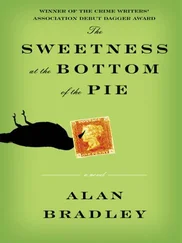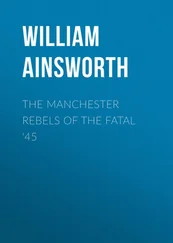Yet among them, Fukuda was rare. His fervor was a quiet one. When I met him nearly a decade after the first H5N1 case, his buzz cut was graying but his round face was still youthful. He was one of the few veteran flu specialists whose brow was clear of lines and furrows. I concluded this was due not to any deficit of passion but rather a balance of passions. (Fukuda, who claims he is only a mediocre musician, had decorated an entire office wall with pictures of antique cellos.) His manner is authoritative but reserved. He is brilliant in analysis but measured and soft-spoken in delivery. He is ever polite, even when his colleagues spy irritation smoldering behind his rectangular-framed glasses. Above all, he is calm and calming. So when he worries, those around him get scared.
Fukuda arrived in Hong Kong late one sultry August evening at the head of a small CDC team. By the next morning he was already cloistered at the city health department, mapping out a systematic investigation into the outbreak.
The victim had been a three-year-old boy named Lam Hoi-ka, who had died in the spring. He had been a healthy youngster, the second son of an affluent Hong Kong couple. The father owned a company that manufactured decorative candles at a factory in mainland China. The mother was in charge of the firm’s marketing. They lived in a satellite town called Tseung Kwan O in the lower reaches of the New Territories, an expanse of former wilderness just beyond the congestion of old Kowloon that the Chinese had ceded to the British crown colony of Hong Kong a century earlier. Tseung Kwan O is really more city than town, a modern, highly planned community with scores of high-rise apartment towers, some as tall as fifty stories, amid American-style shopping malls and brightly painted schools and kindergartens. The town sits on a bay of the same name, which means General’s Bay. But the British had called it Junk Bay after the multitude of traditional sailing vessels that once plied the waters. The community is no longer oriented to the sea but toward cavernous rail and bus depots. Each morning, the apartment towers disgorge thousands of office workers, headed for downtown less than a half-hour commute away.
Hong Kong health officers had already visited Hoi-ka’s family. It had been a hard interview. The family was distraught, and it took a long time to explain to them how an entirely new virus could have claimed their son. Investigators had gathered what information they could from the parents and their housekeeper about the boy’s recent history. None of it seemed exceptional. When Fukuda arrived in Hong Kong, he asked to see the family again, but they refused to talk anymore. He didn’t press it.
Fukuda had other angles to explore. His first priority was to determine whether this was simply much ado about nothing. The positive test result for H5N1 was so startling that he suspected it could be the result of a contaminated sample. Perhaps the boy had never been infected at all. So Fukuda and his team traced the precise route of the specimen. They went to Queen Elizabeth Hospital, the primary referral hospital on Hong Kong’s Kowloon peninsula, to see the intensive care unit where the boy had been treated. They checked to make sure that hospital staff had followed proper sampling procedures, and they examined the equipment. They asked whether any other patients had a similar respiratory disease and could have been the source of the virus. They asked about the health and habits of the staff. Perhaps some nurse had tracked the virus in. The team also visited the health department’s lab at Queen Mary Hospital on Hong Kong island, reviewing how the tests were conducted. They explored whether the virus might have been inadvertently introduced by technicians working at a veterinary lab in the adjacent building. After nearly a week of investigating, there was still no evidence of contamination anywhere.
But the conclusive proof came in the lab. The team conducted an analysis using antibodies that would find the virus and cling to it. The antibodies were tagged with fluorescent stain so they could be identified under a microscope. When these were added to a sample from the dead boy’s windpipe, they attached to the inside of the human cells in the specimen. The antibodies did not simply float on top. This meant the virus had truly infected the boy’s cells and was not an accidental visitor.
The cruel progression of the boy’s disease also seemed to confirm he’d been struck by a form of viral pneumonia arising from influenza. As Fukuda pored over the medical records, he learned that Hoi-ka was initially taken to a doctor after coming down with a high fever, sore throat, and dry cough. The doctor prescribed aspirin and antibiotics and sent him home. But the condition worsened. The boy didn’t seem to be thinking right or acting right. He was oddly irritable. He wasn’t his usual alert self. The doctor couldn’t put his finger on what was wrong. So he admitted Hoi-ka to a small private hospital. A day later, he was moved to the intensive care unit at Queen Elizabeth Hospital and put on a respirator, but to no avail. The boy was losing consciousness. His lungs were failing. Five days later, he was dead.
Fukuda read the records and thought, “Wow. This is really bad. No matter what they could have done, they weren’t going to prevent him from dying.” Fukuda was struck by the relentless advance of the disease. “It was clear from the time the child got in. He started getting sicker and sicker and sicker and then he died. You don’t expect to see that in young healthy children.” It reminded Fukuda of the healthy young men he had seen in San Francisco in the 1980s struck down almost overnight by AIDS.
It also made him think of his daughters. He couldn’t keep his mind off them. He wasn’t frightened, not yet. There was just one case. But he felt so sad. How awful for parents to lose a child out of the blue to such a mysterious intruder. “This,” he thought, “is just like a visitation from outer space.”
Hoi-ka’s young lungs had been ravaged. The final diagnosis gave the cause of death as pneumonia and acute respiratory distress syndrome, in other words a severe inflammation of the lungs that culminated in their wholesale destruction. But the virus didn’t stop there. The boy suffered kidney failure, and his blood was poisoned, unable to clot normally. His liver and kidneys also showed evidence of Reye’s syndrome, a separate, potentially fatal disease that can occur when aspirin is taken to treat viral disease.
This was indeed flu. But it wasn’t the flu most people know. Sure, ordinary seasonal flu can put you on your back with a fever, a cough that keeps you up at night, and aches that rack your bones. But in the vast majority of cases, these symptoms pass in just a few days. This new strain meant far more than a runny nose and chills.
Often, viruses will adapt themselves to their human hosts over a period of time. They will soften their edges and temper their nastiest qualities. After all, the objective of any virus is to reproduce itself inside its host and then jump to another so it can continue to replicate. A death that comes too quickly does little to serve these ends.
But H5N1 is an interloper, an unrefined newcomer, all fury without the seasoning of age. In human cells it has discovered a fresh target and it pursues its prey deep into the body, penetrating much farther than ordinary flu. Seasonal flu usually strikes the upper respiratory tract, the nose, and nearby throat. The result is sniffles. This novel virus, by contrast, advances on the lungs themselves, attacking the branches of the bronchial tree and the myriad little buds on their tips called alveoli, where the life-sustaining task of exchanging carbon dioxide for oxygen occurs. The pathogen infects the coating of mucus that protects the membranes of the lungs. But unlike regular flu, which cannot reach much beyond surface cells, this newcomer penetrates into the tissue itself. It thrusts deeper. It spreads farther, often infecting both lungs at nearly the same time. As the pathogen relentlessly erodes the cells of the deep lung, you find yourself increasingly short of breath. Your cough is often bloody and you may bleed from your nose and even gums.
Читать дальше











